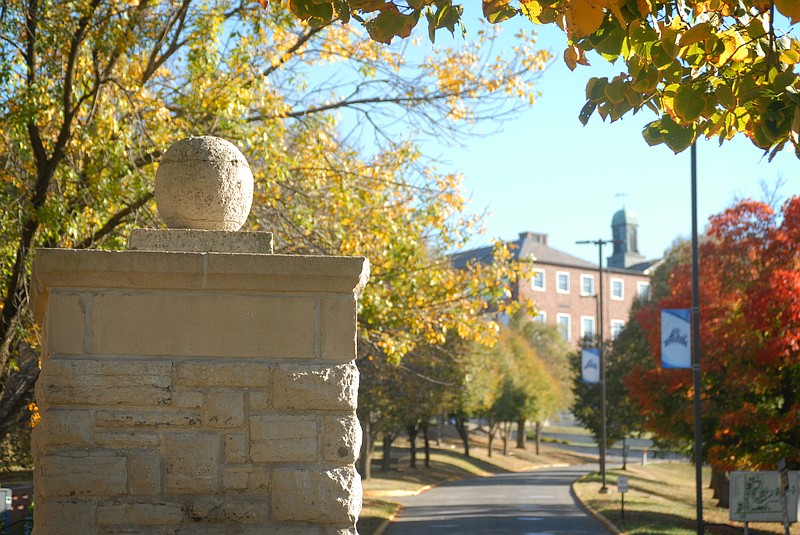The number of students enrolled at Lincoln University increased this year, marking a turning point on a decade-long trend of declines.
The Capital City's historically Black university has 1,833 students enrolled this fall, a 2 percent increase from last year's 1,794.
It's the university's first overall enrollment increase since 2011 and the first increase in new students since 2017. There are 349 first-time freshmen, up from 297 last fall, and 117 first-time transfers, up from 102 last fall. There are 632 students living on campus this fall and 16 new graduate students enrolled, down from 19 last year.
The university previously said new student enrollment was up 22 percent, but that number has since settled to about 17.5 percent after the campus census revealed a number of students paid enrollment fees but didn't end up enrolling for fall classes.
Director of Admissions Danisha Williams, who began in July, said the overall enrollment increase is notable coming off the COVID-19 pandemic.
"It's a good foundation for us to build upon," she said.
Lincoln retained less than half of its fall 2021 cohort, according to the census numbers. The 49 percent of students who stayed this year is consistent with the university's average for the past decade.
"We know that universities are struggling with attracting new students, but also retaining them," Williams said. "And so this is also the pilot year for that first-year initiative where we have those students who will have additional academic support all across the board, tutorial services, dedicated staff, to really make sure we don't see that dip that a lot of universities see between the freshman and sophomore year."
Williams said Lincoln is using this year's enrollment figures to set aggressive goals for next year.
The university wants to bring in 600 new, first-time students next year, with specific goals set for each recruiting area. That would push total enrollment to about 2,000 next year, she said.
"Each year, we're going to work aggressively to continue to increase that," she said. "We have so many initiatives on the table: (memorandums of understanding) with community colleges, State Fair being one, and bringing back our summer bridge program. It's just so much going on at Lincoln and so we want that to translate to more enrolled students."
The university has put a heavier focus on data-driven recruitment strategies during the past year, adding five new regional recruiters to target traditionally high-yielding areas such as St. Louis, Kansas City, Mid-Missouri, the Bootheel and Chicago.
That more than doubled its admissions office staff, which grew from three to eight.
Another effort in motion is a review of internal admissions processes to ensure they work well.
A lot of the process is automated, Williams said. Once a student applies to the open enrollment university, automated messages remind the prospective student to register for orientation or submit their enrollment deposit.
But the university is looking inward to determine if it's providing students financial aid or housing information in a timely manner so students aren't dropping out between the time they apply and when it's actually time for class.
A new priority application deadline set for June 15 will drive students to complete admissions requirements and submit materials sooner and allow the university to identify candidates for the summer bridge program sooner, Williams said.
The regional recruiters will help Lincoln become more visible as well, she added.
Williams said Lincoln has been absent from recruiting events for the past two to three years because it lacked staff, and recruitment efforts fell off during administrative transitions.
"I've personally been looking for Lincoln as I've been in recruitment at other universities for about eight years, and you notice when Lincoln is not there," Williams said. "They have a big presence; they have a huge alumni support that will meet us on the road at different events."
The regional recruiters will increase Lincoln's visibility with high school counselors, nonprofits and "wherever high school students are," she said.
That includes social media.
"Social media is something we really, really want to beef up," Williams said. "We have a great social media presence university-wide, but we have some admissions pages that we could be more specific with."
In its messaging, Williams said Lincoln is focused on affordability, small class sizes, its family atmosphere and job placement.
She said it's one of her goals to articulate to prospective students what Lincoln produces.
It's a comprehensive approach moving forward, Williams explained. She's involved in discussions about the university's summer bridge program and first-year initiative so she can better disperse that information to prospective students.
"I don't think it makes sense for Lincoln to have a strategy and not consider our commuter student population, not consider our high school students, not consider the changing environment as it relates to enrollment management," she said. "So I'm very optimistic about all the things that are going on at Lincoln and our ability to attract new students because of that."

